#parchment
Explore tagged Tumblr posts
Text
here's a fun parchment fact for you re: reusing a surface: sheepskin was often used for legal documents because it's hard to scrape out a word and rewrite without it being obviously damaged, unlike good quality calfskin where it can be undetectable that something has been altered
11K notes
·
View notes
Text






parchment stitching
pages from a cistercian breviary, produced in the cistercian nunnery lichtenthal abbey, c. 1450-1500
source: Karlsruhe, BLB, Cod. Lichtenthal 29
#again as you can see the stitching was done before the text was added#15th century#parchment#parchment repair#manuscript repairs#stitching#codicology#book history#cistercian breviary#Breviarium cisterciense#lichtenthal abbey#medieval manuscripts
920 notes
·
View notes
Text
Ms. Oversize 33 is featured in the video loop for THE MOVEMENT OF BOOKS, an exhibit about all the ways that books move. Ms. Oversize 33 is notable because of its... wait for it... large size! It's a section (5 gatherings) from the middle of a choir psalter, in order for liturgical use. Originally the manuscript would have been held upright in front of a group of singers, so they could all read it at the same time. You can watch the whole loop on YouTube!
Ms. Oversize 33 🔗:
The Movement of Books Video Loop 🔗:
youtube
The Movement of Books exhibit information 🔗:
#medieval#manuscript#liturgy#fragment#oversize#parchment#16th century#book history#rare books#medieval manuscript#Youtube
419 notes
·
View notes
Text


Pages from the Codex Runicus, the only surviving book written in Runes (Medieval a.k.a. Dotted Runes).
It contains the Scanian Law (fol. 1-82), the Scanian Ecclesiastical Law (fol. 84–91), a chronicle of the early Danish monarchs (fol. 92-97) and a description of the Danish-Swedish border (fol. 97-100).
(link to a complete scan of the manuscript)
490 notes
·
View notes
Note
Wow you posted this right as I was reading all abt dishonor titles
Anyway gonna ask now else I will forget again, if you wanted the cats to have like notebooks/sketchbooks,what's the closest thing to use because idk if you think the kitty cats invented ways to make paper
In BB, the cats haven't advanced quite enough to be creating books, but they actually create parchment!
Parchment is essentially super fine, light leather. There's also vellum, made of calf skin, and slunk, made of fetal skin, which are even finer and higher quality.
(I wish I could say which of these that mouse skins would result in, but I have yet to find any record of people even trying to make it out of mouse pelts. So I'm just calling it parchment, until someone, someday, somehow, can confirm if mouse skin is as fine as vellum or slunk.)
As a carnivorous society, they have a LOT of small animal carcasses, and the Kitchen Patrol's job is to make sure every bit of prey is processed... so, every animal is skinned, even if it's just for practice. Hence the abundance of leather.
Interestingly, Clan cats don't really have a "purpose" for parchment. It's just something they make out of prey that was skinned improperly, or which has a skin that's too damaged to make a good pelt. Scraps that would have gone to waste anyway.
Making parchment is especially popular in ShadowClan as a sort of "arts and crafts" thing for kits and apprentices. It requires a chemical bath made out of fermented scraps to soak the skins for a while, so it's essentially a way to introduce children to the ShadowClan Art of never wasting anything.
The Clans will eventually be creating some basic "art" in the near future, and might have a few permanent drawings in personal collections right now, but currently parchment is considered a "plaything." Mostly just used to make crafts, or fold up herbs, or draw on, etc.
(Clan version of kids making slime for funsies)
So if you want to zip ahead and make sketchbooks, make them out of parchment! Another good thing about it is that it can be washed and re-used-- so once your Warrior owns one, there's no stress about constantly making new pages.
(Funfact: you know how some books have straps or weights as decorations? That's a leftover from parchment binding. Parchment "breathes," reacting to moisture, so those decorations were initially made to keep the book pressed flat. They were kept in the switch to paper simply because they look cool.)
144 notes
·
View notes
Text

Arthur sketches people he meets, what if someone finally took the time to sketch him?
#arthur morgan#high honor arthur morgan#rdr2#red dead redemption 2#rdr2 fanart#digital art#art#artwork#procreate#fanart#sketch#parchment
53 notes
·
View notes
Text
Mendoza Gate

Seriously, they take the top metre of contaminated soil off of an area of undesirable land, rebrand it with the suffix 'Gate', slap up some apartments and charge an extortionate rent. That my dears is indeed the model of Parchment, Paper & Co.

If urban living is your thing, and you're made of money, then perhaps this is a proposition for you.
Mendoza Gate is available now for rent.
At the launch evening (press only) there was a distinct waft of wet emulsion mixed with the cologne of Eli (new to the company) and, it would appear, adult hood. What is it with the young that they have to tattoo their highly strokable nubile young bodies?
Anywho, enough of Eli and his 'to die for' jaw line, and back to the apartments - actually they're not too shabby.

If swinging a cat* is your kind of thing, there's plenty of room.

Call Eli for a show-a-round today - seriously, you won't regret it.
*Pets are not allowed under the rental terms and agreement.
67 notes
·
View notes
Text




Fan
parchment, mother of pearl, watercolor, c. 1760
Victoria and Albert Museum
#fan#1760s#1700s fashion#1700s art#parchment#mother of pearl#watercolor#fashion history#victoria and albert museum#woman#women#musical instruments#trees#pink#green
31 notes
·
View notes
Photo

Touching Parchment: Volume 1: Officials and Their Books
"Touching Parchment" culminates 25 years of research on European medieval manuscripts (ca. 1100–1500). By scouring archives and taking more than 900 photographs, Kathryn Rudy documents the visible damage of neglected and undisplayed copies, interpreting the marks of wear that remain. She suggests these signs are not merely damage but are readable evidence of the deep emotional connections and ritualistic gestures people used to engage with the written word.
Manuscript historian Kathryn Rudy from the University of St. Andrews in Scotland is known for taking a forensic approach to studying medieval manuscripts. Renowned for her Dirty Books Project, she introduced a new historical approach by using the densitometer to measure grime and manipulation.
In Touching Parchment, the first of two open-access volumes, Rudy presents the culmination of 25 years of research across European archives. Collecting more than 900 photographs of European medieval manuscripts (ca. 1100–1500)—many of which are reproduced in this book—she argues that these works are often left unexamined since damaged manuscripts are typically not chosen for display. Yet, she asserts that the damage on these manuscripts represents “interpretable marks of wear” and each mark, whether intentionally put there or not, has a story to tell (4). These signs of wear reveal the deep emotional connections people formed with manuscripts, shedding light on the ritualistic gestures they used to engage with the written word.
In Part I, the first chapter serves as an introduction outlining the structure, method, and approach along with how the book relates to its relevant historiography. In “Ways of Touching Manuscripts,” Rudy breaks down her analysis of manuscript damage into the broad categories of “inadvertent wear” and “targeted wear,” each of which has various subcategories (29). The discussion of the targeted wear had much more detail. She talked about depositing wax as place markers and scratching them off, kissing texts, touching images, and sewing curtains to pages among other explanations for visible damage to manuscripts.
Part II, titled “Books and Authority,” begins with Rudy exploring the broader trends of oath-swearing, tracing its evolution from the "Peace of God" movement in 975 to roughly the 14th century—a period spanning four centuries during which the practice of swearing on Gospels and missals gradually replaced using relics. A discussion of coronations and other acts of oath-taking was interestingly used to explain manuscript wear. Chapter Four relates how the history of kissing “images, words, and decoration within books” left physical evidence of wear (85). A history of missals that focused on liturgical practices highlights a shift in the 12th century, when worship became more theatrical, incorporating an increasing number of prescribed religious gestures—many of which are now evident in manuscripts. The next chapter “Swearing: From Gospels to Legal Manuscripts” emphasizes the late medieval expansion of oath-swearing from something concerning only emperors and kings to a practice adopted by the literate public. Legal manuscripts copied images from religious texts and adopted many of the rituals that were once exclusive to the religious sphere. Touching these images in oath-taking ceremonies left smears and other signs of wear that were painstakingly photographed and analyzed. The final chapter reviews the wear on books used in liturgical singing and memorializing the dead. Given the purpose of these manuscripts and the frequent use of ritual liturgical gestures, these books survived with much greater wear compared to other medieval manuscripts.
Overall, many of the chapters could function as stand-alone supplementary texts for a variety of post-secondary courses, spanning disciplines from art to history. Secondary teachers might make use of the hundreds of images to illustrate how people interact with both art and the written word. Its open access ensures that this incredible book can reach and benefit a wide audience.
Read More
⇒ Touching Parchment: Volume 1: Officials and Their Books
38 notes
·
View notes
Text

Pinniped sapiens- commonly known as 'Seal Merfolk'
(More information below the cut)
Located in the artic, Seal Merfolk, scientifically known as Pinniped-Sapiens, are a style of sea-folk, who tend to live below the ice. resembling artic seals, they have a dappled pattern that acts as camouflage in sun-spotted water.
unlike many other types of merfolk, their tails are not very long, only about a foot longer then a human's legs.
similarly, they do not have scales, instead being covered in a layer of thick and warm fur all over their body (tail, arms, face- all of it). Their eyes are black, dark, and help them see under the murky water- although it does cause them to have trouble to see while out of the water.
#steampunk#merfolk#mermaids#drawings#digital art#parchment#style#art style#seals#selkies#seal mermaids#worldbuilding#victorian#steampunk art
55 notes
·
View notes
Text
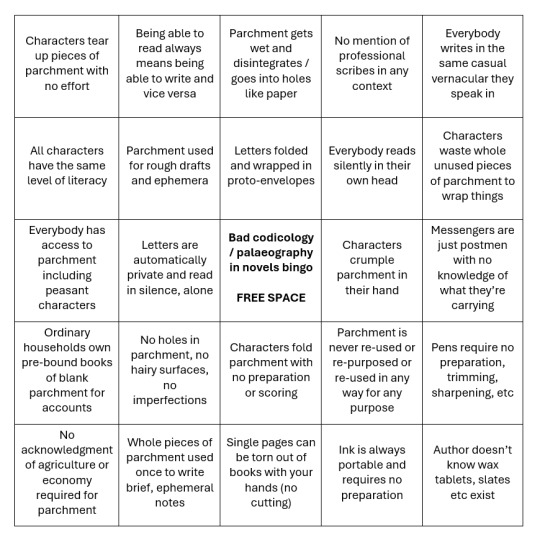
okay what did i miss
(yes some of these overlap and some are suppositions. for example if parchment is always used for ephemera, rough drafts, notes, and never re-used or re-purposed, we can also assume that the author is unaware of wax tablets as a concept)
6K notes
·
View notes
Text
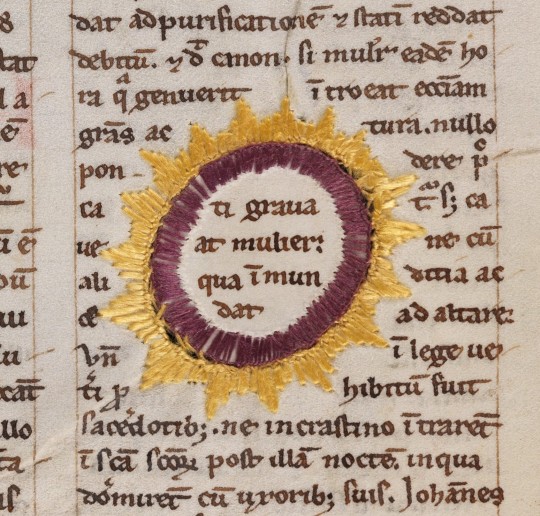

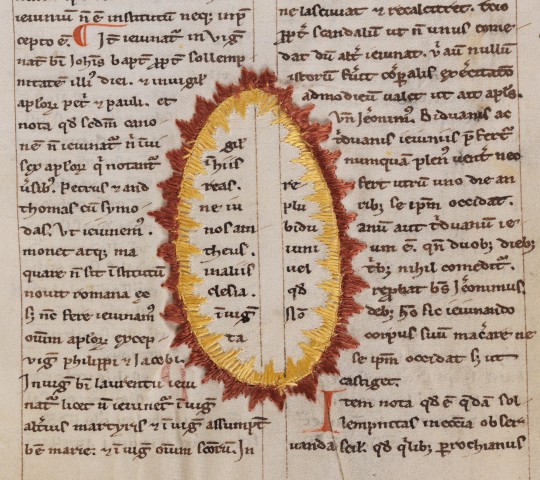
more medieval manuscript repairs
all from a miscellany containg thomas de chabham's "summa poenitentialis", southern germany (?), first half of the 13th c.
source: Basel, Universitätsbibl., B X 1, fol. 56r, 67r, and 71r
#since y'all liked them so much last time :)#here i love how you can tell the mending was done BEFORE the script was added#13th century#medieval manuscript repairs#book history#visible mending#parchment#medieval art#thomas de chabham#summa poenitentialis#parchment stitching
5K notes
·
View notes
Text

Mayhem on twitter requested I draw parchment from the COOLSKELETON59 AU. I was introduced to it just now and I LOVE IT SO MUCH!?!?! The concept is so freaking cool!
176 notes
·
View notes
Text
Ms. Codex 1280 is a ledger of debtors and creditors of the Medici family for the years 1537-1539, written on paper in Italy ca. 1539. The binding is contemporary parchment and leather. The lower cover wraps around upper cover with leather strap, and there is a metal buckle on upper cover and decorative leatherwork on spine.
🔗:
Why aren't we wearing gloves? Check out our pinned post to find out!
#manuscript#renaissance#16th century#italian#medici#italy#binding#leather#parchment#buckle#leatherwork#metalwork#book history#rare books
352 notes
·
View notes
Text
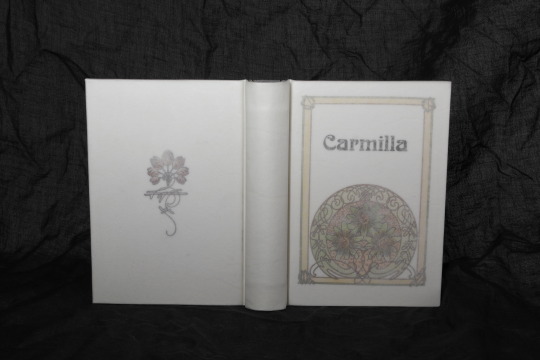
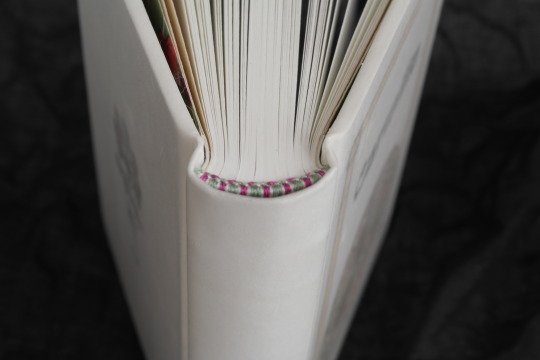
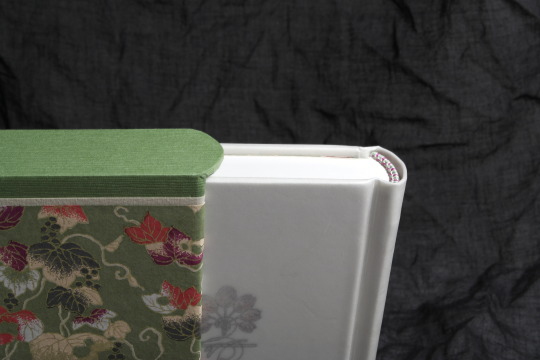


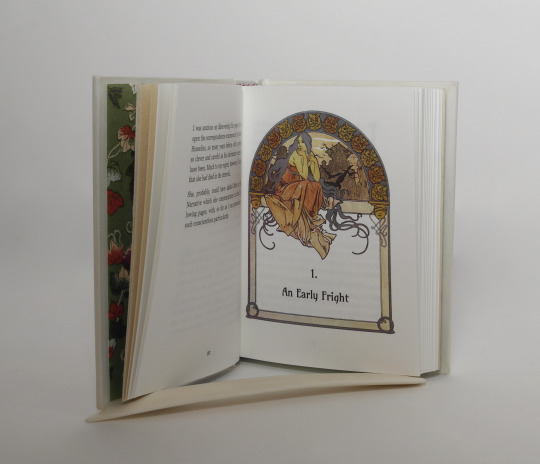


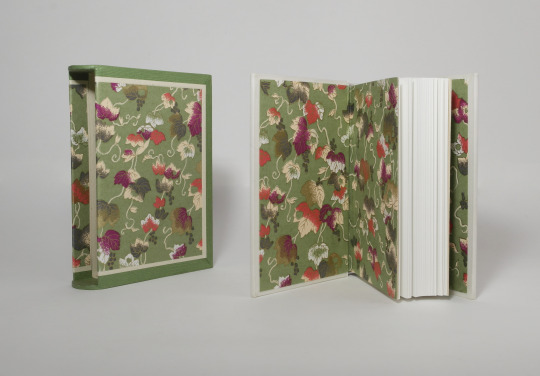
Carmilla - Robert Sheridan Le Fanu Full vellum Bradel binding with slipcase
Book art - Alphonse Mucha Many thanks @notwhelmedyet for inspiring me towards Mucha for bookart
Materials used:
case board - museumsboard, white spine stiffener - cardboard gathering the case and laser printed cover decoration - white paper cover material - calf parchment
inner book text block paper - Schleipen fly 05, 115gsm endpapers - Chiyogami paper and Hahnemühle Ingres Bütten paper sewing material - linnen thread (flax) endbands - buttonhole silk (Gütermann) edge finish - head and foot edge polished Font's used Titel font - Boecklin's universe Chapter title, page count and drop caps - Amarante text body - Georgia
Slipcase case construction - grey board (1,5 and 1mm) covering materials - Tsumugi paper, Hahnemühle Ingres Bütten paper, Chiyogami paper
#bookbinding#Carmilla#le fanu#vellum binding#vellum#parchment#slipcase#Mucha#alphonse mucha#bookart#polished edges#this was a bit of a go for a vellucent binding#next time I'll try a treatment and see if it can be more clear#parchment bindings are always a bit nerve wrecking#also I improvised a new background because white parchment on white background is not really much of a contrast
299 notes
·
View notes
Note
if the cats don't do a lot of writing, what is parchment used for?
Parchment is basically de-haired, soaked, super thin leather. It's so easy to make that the question is less, "what is it used for?" And more "How can we use this?"
The hardest part is removing the hair, which requires an alcohol bath. SHADOWCLAN'S FERMENTATION PERK STRIKES AGAIN
It's often one of the first things a kit or apprentice will be taught about leather processing, because it's not a big deal if they bungle making it. It teaches them about using soaks, stretching, and skinning all at once. Kind of like the kitten equivalent of a class project; the Educator and the current Mentors will often plan this out as a big thing together.
Parchment will be made out of whatever little animal that was hunted in a sloppy way and has big gashes, cut into strips, and stretched in whatever shape makes sense.
So by "parchment," it's not neccesarily a beautiful, square piece of "paper" like in a book. It's leather shreds.
Most of the time this is used for art, with the very big, useful stretches most coveted by artsy cats like Sootfur. It doesn't take bistre well, but they have other pigments available to them. Sometimes it's used to practice sewing, which is ridiculously important for patching together all the little animal pelts they collect. Other times it's just given to whoever to play with.
#clan culture#You will not believe how incredibly easy it is to make leather products#It's 'you dont even need fire' level easy#Leather#Parchment#A long time ago I was trying to figure out paper and I had to halt because paper is actually hard as fuck to make in this region#I did not know that they were mostly using PARCHMENT#Which is NOT paper#It is SKIN
150 notes
·
View notes